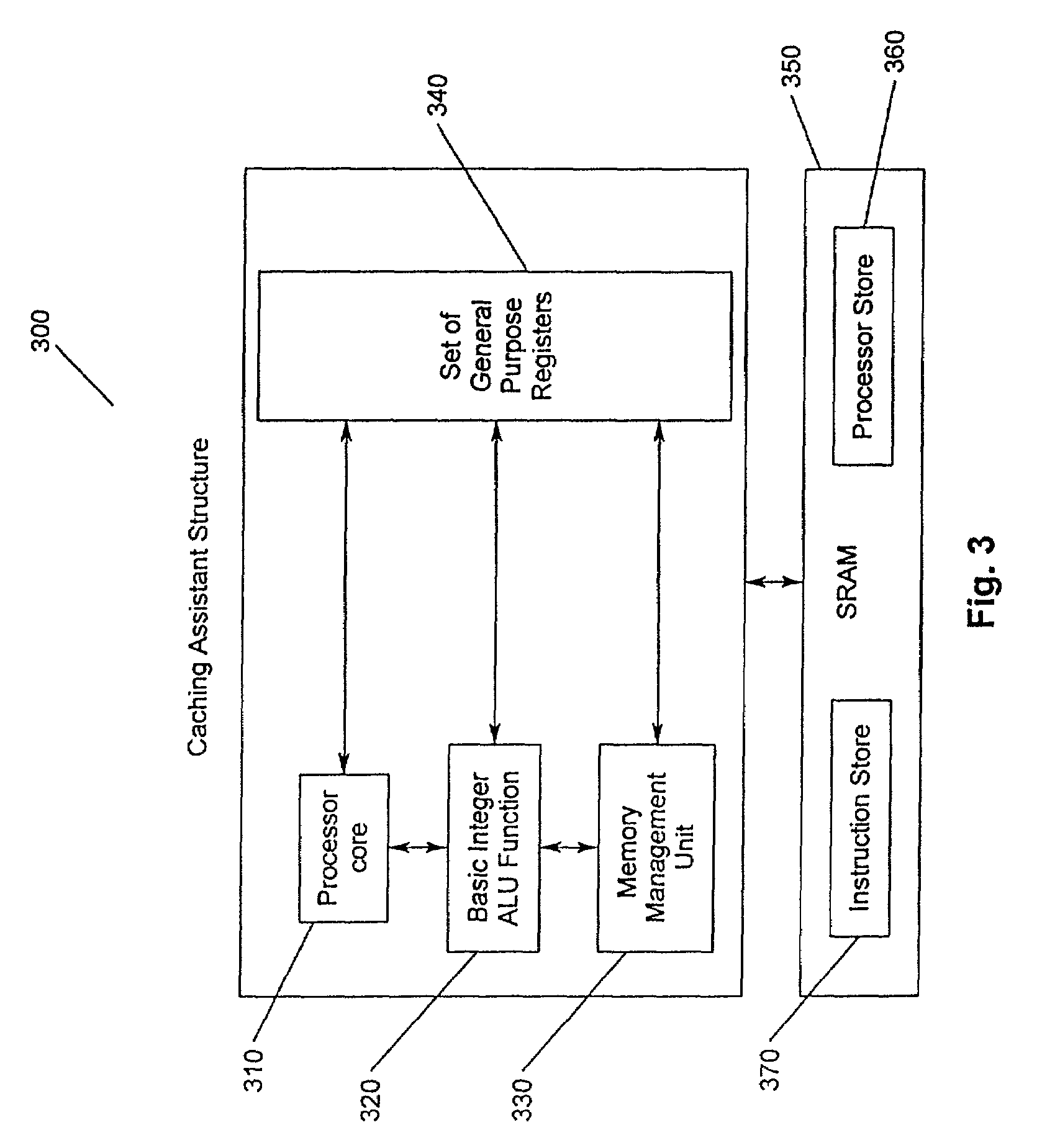Method and apparatus for optimizing cache hit ratio in non L1 caches
- Summary
- Abstract
- Description
- Claims
- Application Information
AI Technical Summary
Benefits of technology
Problems solved by technology
Method used
Image
Examples
Embodiment Construction
[0045]In the following description of the exemplary embodiment, reference is made to the accompanying drawings which form a part hereof, and in which is shown by way of illustration the specific embodiment in which the invention may be practiced. It is to be understood that other embodiments may be utilized as structural changes may be made without departing from the scope of the present invention.
[0046]The present invention provides a method and apparatus for optimizing the hit ratio of at least one non-L1 cache operatively connected to a processor by providing a caching assistant to go along with the cache controller which provides cache analysis and cache maintenance. The method and apparatus is applicable to processors having embedded L2 caches, embedded L3 caches, external L2 caches, external L3 caches, etc., and other special purpose caches. It is also applicable to processors having embedded L1 caches to optimize a hit ratio of at least one non-L1 cache. Caching assistant fir...
PUM
 Login to View More
Login to View More Abstract
Description
Claims
Application Information
 Login to View More
Login to View More - R&D
- Intellectual Property
- Life Sciences
- Materials
- Tech Scout
- Unparalleled Data Quality
- Higher Quality Content
- 60% Fewer Hallucinations
Browse by: Latest US Patents, China's latest patents, Technical Efficacy Thesaurus, Application Domain, Technology Topic, Popular Technical Reports.
© 2025 PatSnap. All rights reserved.Legal|Privacy policy|Modern Slavery Act Transparency Statement|Sitemap|About US| Contact US: help@patsnap.com



